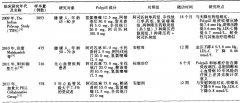读医学网
2011年美国心脑卒中协会脑静脉血栓形成诊疗指南
发布时间:2014-05-19 10:34 类别:神经系统疾病 标签:neurosurgeon emergency neurologists commonly 来源:丁香园
Thrombosis of the dural sinus and/or cerebral veins (CVT) is an uncommon form of stroke, usually affecting young individuals. Despite advances in the recognition of CVT in recent years, diagnosis and management can be difficult because of the diversity of underlying risk factors and the absence of a uniform treatment approach. CVT represents 0.5% to 1% of all strokes. Multiple factors have been associated with CVT, but only some of them are reversible. Prior medical conditions (eg, thrombophilias, inflammatory bowel disease), transient situations (eg, pregnancy, dehydration, infection), selected medications (eg, oral contraceptives, substance abuse), and unpredictable events (eg, head trauma) are some predisposing conditions. Given the diversity of causes and presenting scenarios, CVT may commonly be encountered not only by neurologists and neurosurgeons but also by emergency physicians, internists, oncologists, hematologists, obstetricians, pediatricians, and family practitioners. Our purpose in the present scientific statement is to review the literature on CVT and to provide recommendations for its diagnosis and management. Writing group members were appointed by the American Heart Association (AHA) Stroke Council’s Scientific Statement Oversight Committee and the Council on Epidemiology and Prevention. The panel included members with several different areas of expertise. The panel reviewed relevant articles on
CVT in adults and children using computerized searches of the medical literature through July 2010. These articles were supplemented by other articles known to the authors. The evidence is organized within the context of the AHA framework and is classified according to the joint AHA/American College of Cardiology Foundation and supplementary AHA Stroke Council methods of classifying the level of certainty and the class and level of evidence (Tables 1 and 2). After review by the panel members, the manuscript was reviewed by expert peer reviewers and members of the Stroke Council Leadership Committee and was subsequently approved by the AHA’s Science Advisory and Coordinating Committee. Although information about the cause and clinical manifestations of CVT is included for the convenience of readers who may be unfamiliar with these topics, the group’s recommendations emphasize issues regarding diagnosis, management, and treatment. The recommendations are based on the current available evidence and were approved by all members of the writing group. Despite major progress in the evaluation and management of this rare condition in recent years, much of the literature remains descriptive. In some areas, evidence is lacking to guide decision making; however, the writing group made an effort to highlight those areas and provide suggestions, with the understanding that some physicians may need more guidance, particularly in making decisions when extensive evidence is not available. Continued research is essential to better understand issues related to the diagnosis and treatment of CVT. Identification of subgroups at higher risk would allow a more careful selection of patients who may benefit from selective interventions or therapies.




